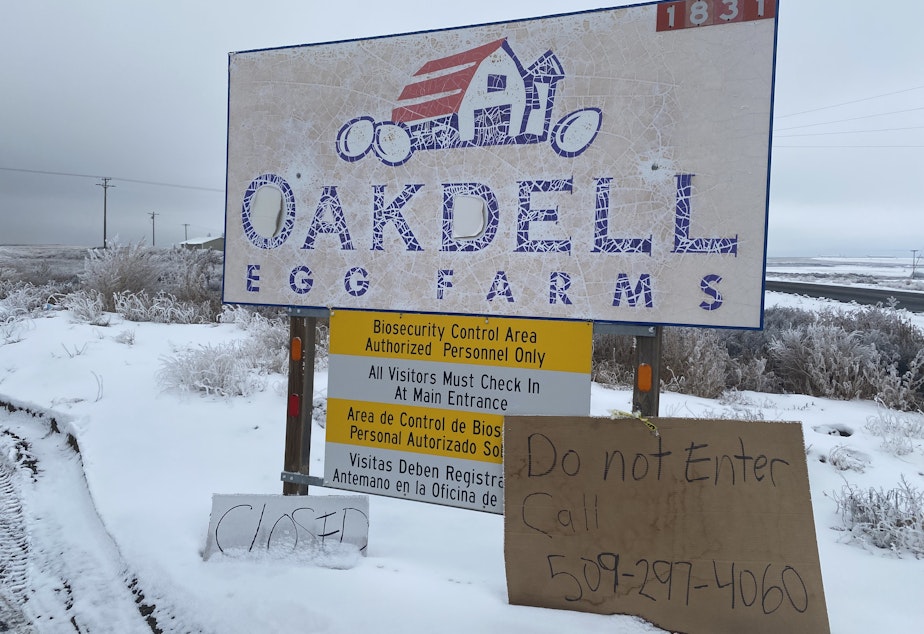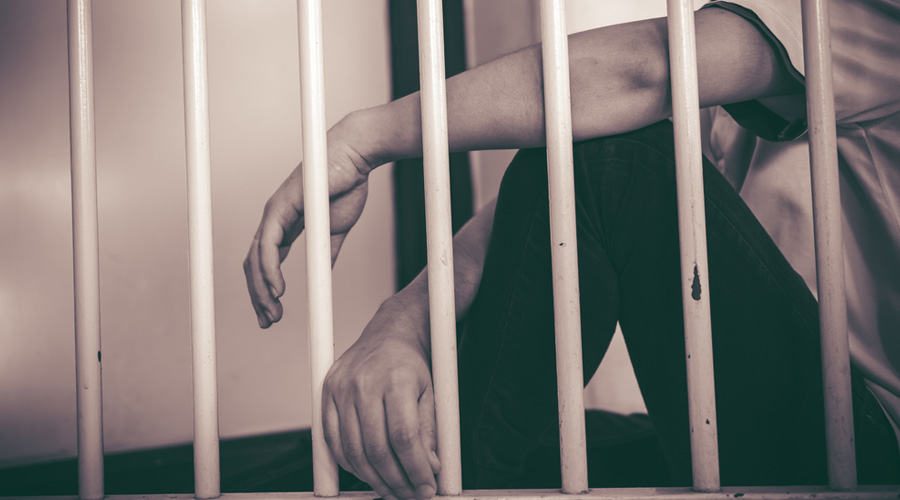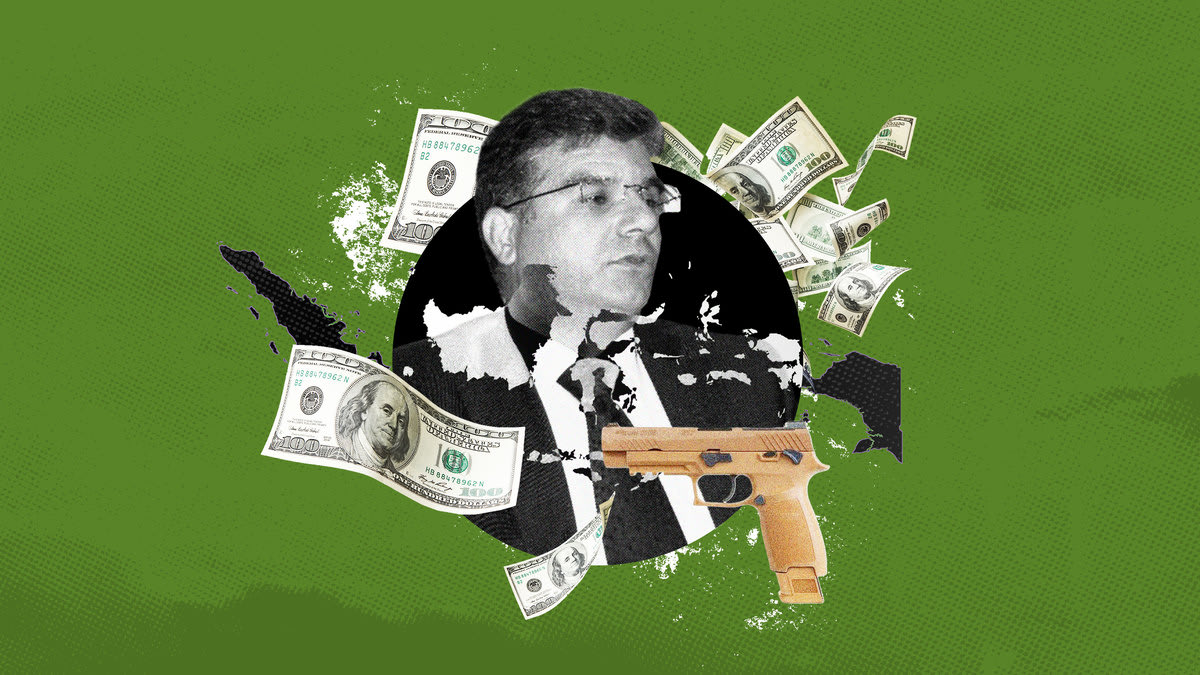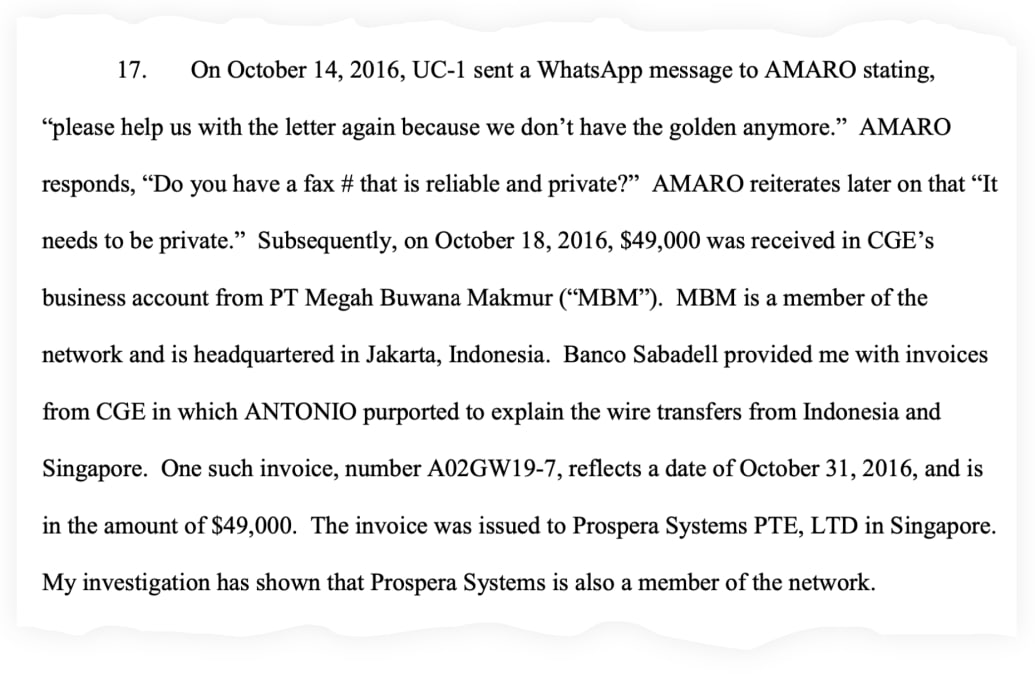A 3.5-million-pound problem: More than a million chickens near Pasco have bird flu

Agriculture officials are quarantining flocks at Oakdell Farms in snowy north Franklin County, Washington, because the flock has come down with highly pathogenic avian influenza H5N1.
CREDIT: NORTHWEST NEWS NETWORK
BY
Anna King
DEC 16, 2022
More than a million chickens at a farm in Franklin County, Washington, are set to be destroyed because of bird flu. Officials are deliberating how to transport, bury, compost, or incinerate the birds.
Hoar frost collects like armored spikes on the trunks of rural poplars.
The stout trees define the snowy edges of vast crop fields in Franklin County, in southeast Washington, from the white blur of flat land everywhere else.
This bleak scene is made more grim when approaching Oakdell Farms off of East Sagemoor Road, where highly pathogenic avian influenza is in a commercial flock of 1,015,500 — more than a million — chickens. State and federal officials aren’t naming the farm, but there are few egg operations in Franklin County with that many fowl.
At the edge of the farm, a man in Carhartt-colored winter coveralls sits warming from the 20-degree temps in a small white pickup with a utility light flashing.
When cars approach from the farm side toward the highway, he scrambles from the truck to stop them. He sprays a pink disinfectant from a large sprayer bottle with a hand wand over the tires. Signs out front — some hand made on cardboard — read “Biosecurity Control Area, Authorized Personnel Only,” and “Do not enter, call …”
Oakdell Egg Farms, Inc.
The Washington State Department of Agriculture said 1,015,500 birds are affected, although they won’t name the facility. But, Cliff Lillywhite, president of Oakdell Egg Farms, Inc., confirms that it’s their flock.
It’s been stressful: The leaders and about 45 full-time staff are helping government officials dispatch the more than a million egg layers.
“You know we have an obligation to take care of our birds,” Lillywhite said. “We don’t like to see our birds suffer. And this is a very horrible disease that affects the birds. We don’t like to see that. There is certainly a financial aspect of it too — dead birds don’t lay eggs.”
Each chicken lays about an egg a day, so Lillywhite said it’s also stressful to not be able to market those many eggs. Oakdell Farms claims to be the largest egg-laying operation in the Intermountain West.
The egg-laying business north of Pasco has massive facilities. Several large desert-brown chicken warehouse-like buildings are lined up in a neat row off the highway behind a corn field.
Lillywhite said their operation is a three-generation family business.
“I think the egg business is extremely important because the nutritional value of an egg is unsurpassed by virtually any other food item,” Lillywhite said. “It’s kind of the standard whereby any other protein items are compared. I, personally, and many in our company feel a deep obligation to help consumers to make wise choices in their diet and use eggs appropriately to help them achieve a normal, healthy diet. We believe deeply in the nutritional value of an egg.”
Lillywhite said after his flock is put down – and the facilities are disinfected – U.S. Department of Agriculture officials will swab and test the buildings. And then, the whole facility has to sit vacant for a couple weeks. It will take nearly six months to raise reliable egg layers from baby chicks.
The problem
The state received the USDA’s confirmed test results on Wednesday — that the chickens here do have highly pathogenic avian influenza, known as H5N1, said Amber Betts, a spokesperson for the Washington State Department of Agriculture.
More than a million birds live in several large long rectangular warehouse-like buildings. The buildings are painted desert tan, aside from one slate blue one, and built in neat rows with massive air handling units at their ends.
It’s going to be a massive job to clean up this property, and sanitize everything, Betts said.
“No matter the size of the farm, whether it’s a backyard or a commercial, whether it’s five birds or a million, it’s incredibly taxing on everybody that’s involved,” she said. “In addition to the birds themselves that are suffering this terrible virus, which is just brutal. It’s not a good way to go out.”
‘Not a good way to go out’
Birds that get sick with avian influenza often see discharge from the eyes or nasal openings, a tilting head and sudden death. This is the first commercial flock ever to be infected in Washington state, although more than 30 backyard flocks have come down with the virus. In Oregon, there have been no commercial flocks infected so far, but more than 20 affected backyard flocks. And it all comes as 694 flocks — 300 of them commercial — are infected across the U.S. so far this year.
Bird flu has killed waterfowl and backyard flocks with a vengeance this year, Betts said.
The plan
A million birds is a lot to process, literally. Even when a backyard flock gets infected, state government officials treat biosecurity very seriously. But with a million birds — that’s around 3.5-million pounds of chicken to dispose of if they’re all full grown. State officials said they, federal and county officials are weighing the options on how to safely transport, bury, compost or incinerate all the birds. No decision has been made yet.
Benton-Franklin Health District officials stressed that the current risk of avian influenza infecting the general public is extremely low. The type of bird flu that is spreading in wild birds and domestic poultry in the U.S. has only been identified in one person who had close contact with infected birds.
“There have been no cases of avian influenza identified in humans in Washington state,” said Hannah Schnitzler, communicable disease epidemiologist with Washington State Department of Health.
That said, health officials advise people not to touch or move dead or sick wild birds and ask people to report such instances to Washington Department of Fish and Wildlife’s online reporting tool.
Tough deal
Having to destroy animals they’ve taken care of for years and sometimes decades can be very distressing to those who work in these facilities, Betts said.
“It’s just devastating,” she said. “When your chickens are part of your family, it’s super difficult to watch them go through this. Or have to euthanize. And then, [at] an operation like this, it’s just taxing on everybody. It’s a lot of work. There’s a lot of emotions from the producers as well as our veterinarians. It’s just a very difficult thing to have to go through.”
Oakdell is an egg operation that spans the West. According to its website, the company has operations in Lewiston, Utah; Franklin, Idaho; and outside of Pasco, Washington.
“You can find our eggs in eleven states including Washington, Oregon, Utah, Idaho, Wyoming, Montana, Nevada, Colorado, California, Alaska, and Hawaii,” the website reads. “They’re sold under the Oakdell Egg Farms brand as well as many of your favorite store brands.”
Sitting in a warming pickup outside a commercial hay outfit nearby, a farmer rubs his face as he said it’s been tough on all who work at Oakdell. He didn’t want to be identified, but he said the egg farm operators are friends of his. And it’s been a really tough deal. [Copyright 2022 Northwest News Network]
Editor's Note: Changes have been made to the original post to correct the combined weight of the infected chickens.









